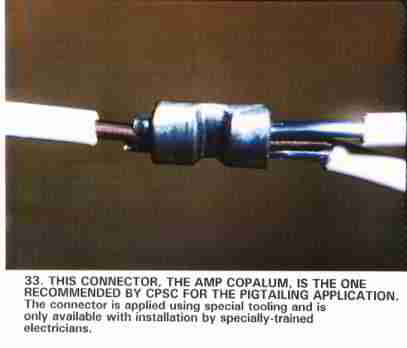 Feb 25, 2010 - 2:07 PM Feb 25, 2010 - 2:07 PM
|
|
 Enthusiast      Joined Mar 16, '09 From New York Currently Offline Reputation: 23 (100%) |
So im not sure where this wire goes, but its the smallest one on the (pos.) battery. When I replaced my engine the wire got cut too short and now I have to make a small extension on the wire (only about 5") But and I am pretty sure this is why it keeps melting but I need some opinions,
I keep using a 12 gauge (have used auto, and home electric wire both melted). But I am thinking the wire that is stock is a 10 gauge, that part never melts only the small extension will melt the casing, or any amount ot electrical tape right off of it. It is in the engine bay so it may get hot i guess but I even put some split loom on it and it melts on the inside. Is this because I am using too small of a wire? Thanks to anyone who can help me confirm my problem!- This post has been edited by mgnt232: Mar 9, 2010 - 6:30 PM -------------------- |
 |
Replies
 Mar 18, 2010 - 12:32 PM Mar 18, 2010 - 12:32 PM
|
|
|
Enthusiast      Joined May 29, '09 From Gainesville, FL Currently Offline Reputation: 17 (100%) |
You need to use the same guage wire, tin the wires with solder. Put a crimp connector, and a piece of high heat, oil resistant, heat shrink. Solder the 2 together, crimp the connector and heat the heatshrink.
Your issue is a bad connection and incorrect wire size. Its arching from the bad connection and melting away the jacket thus making the connection even worse. Just because a wire is 12 guage doesn't mean it can handle the current put through it. It needs to match the exsisting wires specifications. Doing it any other way is recipe for a insurance claim on a burnt down car. Use a connector like this, you might need to purchase the crimping tool  Electrical transfer is all about surface area. This post has been edited by rave2n: Mar 18, 2010 - 12:37 PM |
Posts in this topic
 mgnt232 My battery wire keeps melting! Feb 25, 2010 - 2:07 PM
mgnt232 My battery wire keeps melting! Feb 25, 2010 - 2:07 PM
 Espo It's best to keep the gauge consistent. If the... Mar 18, 2010 - 2:27 AM
Espo It's best to keep the gauge consistent. If the... Mar 18, 2010 - 2:27 AM
 SoDo Put wire loom around it. Mar 18, 2010 - 4:35 AM
SoDo Put wire loom around it. Mar 18, 2010 - 4:35 AM
 lagos QUOTE (mgnt232 @ Feb 25, 2010 - 3:07... Mar 18, 2010 - 11:08 AM
lagos QUOTE (mgnt232 @ Feb 25, 2010 - 3:07... Mar 18, 2010 - 11:08 AM
 T3rrorbyte I would trace the wire see where it goes and check... Aug 5, 2010 - 7:48 AM
T3rrorbyte I would trace the wire see where it goes and check... Aug 5, 2010 - 7:48 AM  |
1 User(s) are reading this topic (1 Guests and 0 Anonymous Users)
0 Members:
| Lo-Fi Version | Time is now: December 21st, 2025 - 5:32 PM |




